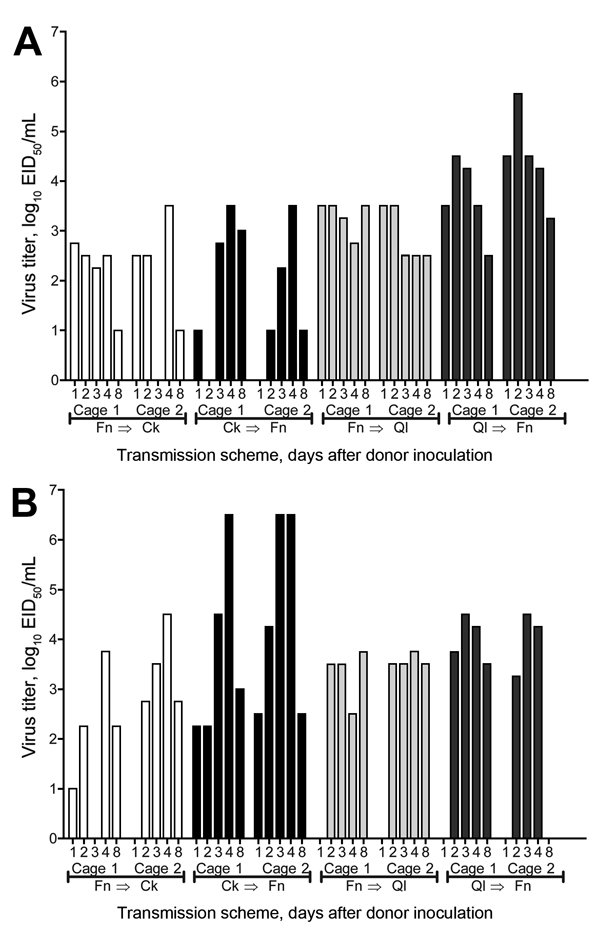Volume 21, Number 4—April 2015
Research
Influenza A(H7N9) Virus Transmission between Finches and Poultry
Figure 5

Figure 5. Virus load in shared water pans for birds in an interspecies study of influenza A(H7N9) virus transmission. A shared drinking water sample (500-μL) was collected daily on postinoculation days 1–4 and 8. Virus titers in samples were determined in embryonated chicken eggs. A) Shedding from A/Anhui/1/2013 (H7N9)–infected birds. B) Shedding from A/Chicken/Rizhao/867/2013 (H7N9)–infected birds. Cages 1 and 2 indicate results from duplicate experimental groups. EID50, 50% egg infectious dose; Ck, chicken; Fn, finch; QI, quail.
Page created: March 17, 2015
Page updated: March 17, 2015
Page reviewed: March 17, 2015
The conclusions, findings, and opinions expressed by authors contributing to this journal do not necessarily reflect the official position of the U.S. Department of Health and Human Services, the Public Health Service, the Centers for Disease Control and Prevention, or the authors' affiliated institutions. Use of trade names is for identification only and does not imply endorsement by any of the groups named above.